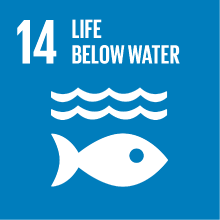PHYSICS 1 AND LABORATORY
- Academic year
- 2018/2019 Syllabus of previous years
- Official course title
- FISICA I E LABORATORIO
- Course code
- CT0082 (AF:274960 AR:158470)
- Modality
- On campus classes
- ECTS credits
- 6
- Degree level
- Bachelor's Degree Programme
- Educational sector code
- FIS/01
- Period
- 2nd Semester
- Course year
- 1
- Where
- VENEZIA
- Moodle
- Go to Moodle page
Contribution of the course to the overall degree programme goals
The instructional goals of the course are:
1) development of the capability to solve classical Mechanics and Thermodynamic problems, by applying their main laws;
2) favouring and stimulating the use of a correct logical-deductive reasoning in the resolution of problems and in general within the activities related to the learning;
3) development of the capability to present concepts and scientific reasoning in a correct and rigorous formal way, both orally and written;
4) development of the necessary familiarity with the basic concepts of the Error Theory, in order to acquire an appropriate experimental approach to the scientific investigation, included the proper use of the scientific instruments;
5) to acquire familiarity with data processing protocols, as well as with the writing of a scientific report using the appropriate language.
Expected learning outcomes
1.1. To know and understand the main physics laws concerning the cassical concepts of kynematics, dynamics, thermodynamics.
1.2. To know and understand the main characteristics of the process of acquisition and processing of the experimental data.
2. Capability of applying knowledge and comprehension
2.1. To use the learned laws and concepts in the resolution of theoretical or practical problems, with a logical and deductive approach.
2.2. To know how the learned concept may find application in the study of environmental systems.
2.3. To know how to collect experimental data, to process them and to realize a final written scientific report.
3. Capability of judgement
3.1. To evaluate the logical consistency of the results coming from the application of the learned physical laws.
3.2. To critically evaluate and recognize the presence of mistakes, by a correct evaluation of the used method and of the numerical results.
4. Communication skills
4.1. To communicate both the knowledge and the effects of its application using the proper scientific language.
4.2. To interact with the teacher and with the other students in a constructive way, also during the activity in laboratory.
5. Capability of learning
5.1. To take comprehensive and rigorous notes, even by the interaction with the other students.
5.2. To properly select the bibliographic references for the study, even by the interaction with the teacher, possibly also for topics or examples that are not easily found in a textbook.
Pre-requirements
Contents
Presentation of the course and its contextualization within the learning process. Standard Unit System. Frame of reference.
KYNEMATICS OF THE MASS POINT
Position, velocity, acceleration. Uniform and accelerated rectilinear motion. Circular motion. Motion in a plane. Radial and transverse velocity, tangential and centripetal acceleration. Angular velocity and acceleration.
DYNAMICS OF THE MASS POINT
Concepts of force and (inertial) mass. First Newton law. Second Newton law. Classification of the forces. Weight, restraining reactions. Third Newton law. Static, dynamic and viscous friction. Elastic forces in one dimension. Simple harmonic motion. Work of a force. Kinetic energy. Kinetic energy theorem. Power of a force. Potential energy. Conservative systems: mechanical energy and its conservation. Energy balances.
DYNAMICS OF THE SYSTEMS
Definition of mass center. Theorem of the motion of mass center. Conservation of momentum. Angular momentum. Torque. Dynamic equations. Rigid body. Moment of inertia. Translational and rotational motion. Static equilibrium of bodies, statics equations.
FLUID MECHANICS
Density. Pressure. Stevin’s law. Pascal’s principle. Communicating vessels. Hydraulic jack. Hg barometer. Archimede’s principle. Motion in a fluid: Lagrangian and Eulerian descriptions. Streamline and streampipe. Flow rate. Ideal fluids. Bernoulli’s theorem. Venturi’s pipe. Cohesion, surface tension, capillarity.
THERMODYNAMICS
Heat and temperature. Temperature scales. Thermal capacity, specific heat. Internal energy. First principle of Thermodynamics. Ideal and real gas. Law of ideal gas. Kintetic theory of gases. Classical statements of the second principle of Thermodynamics. Entropy. Boltzmann’s definition of entropy.
ERROR THEORY AND LABORATORY
Systematic and random errors. Accuracy and precision. Significant figures. Mean and average, variance, standard deviation. Quadratic propagation of error. Hystograms. Gaussian distribution. Confidence levels. Weighted average. Least squares method. Linear regression. One laboratory experiment, to familiarize with some instrumentation and apply the learned Error Theory concepts.
Referral texts
J. Walker, D. Halliday, R. Resnick, “Fondamenti di Fisica Vol. I – Meccanica Onde Termodinamica”,
The text is also available as a single Volume, including Electromagnetism and Modern Physics, useful to develop further Physics topics by oneself, depending on the studies chosen within the Environmental Sciences.
Given the general character of the basic concepts of Error Theory, any university text containing them is acceptable. The following text is however suggested:
J.R. Taylor, “Introduzione all'analisi degli errori. Lo studio delle incertezze nelle misure fisiche”, Zanichelli, Bologna 1999.
As an integration, is also suggested the following text, freely downloadable from the website http://wwwcdf.pd.infn.it/labo/INDEX.html :
M. Loreti, “Teoria degli Errori e Fondamenti di Statistica”, Decibel-Zanichelli, Bologna 1998.
Assessment methods
The written exam consists of a series of exercises, to be numerically solved justifying the used methods. The student has to demonstrate both to have acquired the concepts provided during the class and to be able to apply them coherently in the problems resolution. Depending on the semester structure, the written exam might be replaced by two intermediate written tests, one at about the middle and the other at the end of the course. The duration of the written exam is 2 hours (1 hour each in the case of the two intermediate tests). During a written exam, it is allowed only the use of a scientific calculator and the consultation of a formulary, directly provided by the teacher. The use of notes, textbooks and electronic devices is prohibited.
The exam is passed with a minimun acceptable grade of 18/30 and a highest achievable grade of 30/30 (possibly cum laude).
The laboratory report will present the activity (performed or followed) in the laboratory, and must contain the description of the experimental apparatuses, of the adopted strategies, of the masurements protocols, of the data processing, as well as the final results, including the uncertainty evaluation.
Teaching methods
a) lecture-style presentations at the blackboard, inegrated by 1 or 2 powerpoint presentations about examples of physical application in the field of environmental sciences;
b) laboratory activity, to be organized depending on the numerosity of the students cohort, in which the students attend or participate in an experimental activity, to acquire familiarity with some scientific instruments and to apply the Error Theory learned concepts. The students are required to attend at least half of the lessons given in the laboratory.
Furthermore, in the moodle platform of the University will be present the possible didactic material presented as powerpoint projections in the classroom, as well as solved examples of previous exams exercises.
Teaching language
Further information
Accommodation and support services for students with disabilities and students with specific learning impairments:
Ca’ Foscari abides by Italian Law (Law 17/1999; Law 170/2010) regarding support services and accommodation available to students with disabilities. This includes students with mobility, visual, hearing and other disabilities (Law 17/1999), and specific learning impairments (Law 170/2010). In the case of disability or impairment that requires accommodations (i.e., alternate testing, readers, note takers or interpreters) please contact the Disability and Accessibility Offices in Student Services: disabilita@unive.it.
Type of exam
2030 Agenda for Sustainable Development Goals
This subject deals with topics related to the macro-area "Natural capital and environmental quality" and contributes to the achievement of one or more goals of U. N. Agenda for Sustainable Development



